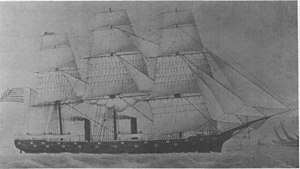
The first USS Newark (C-1) was a United States Navy protected cruiser, the eighth protected cruiser launched by the United States. In design, she succeeded the "ABC" cruisers Atlanta, Boston, and Chicago with better protection, higher speed, and a uniform 6-inch gun armament. Four additional protected cruisers were launched for the USN prior to Newark.

The first USS Powhatan was a sidewheel steam frigate in the United States Navy during the American Civil War. She was named for Powhatan, a Native American chief of eastern Virginia. She was one of the last, and largest, of the United States Navy's paddle frigates.
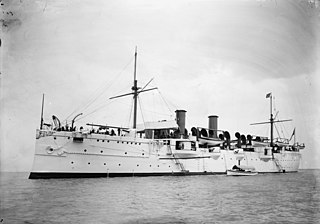
The fourth USS Philadelphia (C-4) was the sixth protected cruiser of the United States Navy. Although designed by the Navy Department, her hull was similar to the preceding British-designed Baltimore, but Philadelphia had a uniform main armament of twelve 6-inch guns.
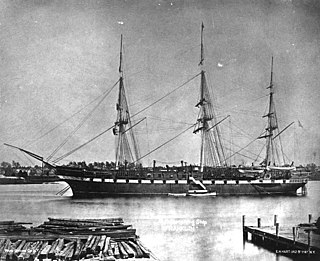
The fourth USS Franklin was a United States Navy screw frigate. The ship was launched in 1864, partially constructed from parts of the previous USS Franklin. Commissioned in 1867, Franklin, named after Founding Father Benjamin Franklin, served as the flagship of the European Squadron from 1867 to 1868 and from 1869 to 1871. She was decommissioned in 1871. Recommissioned in 1873, she joined the North Atlantic Squadron and served until 1877, when she was decommissioned again, then immediately recommissioned for use as a receiving ship at Norfolk, Virginia. She served in this capacity until 1915, when she was stricken and sold.

The first USS Wampanoag was a screw frigate in the United States Navy built during the American Civil War.
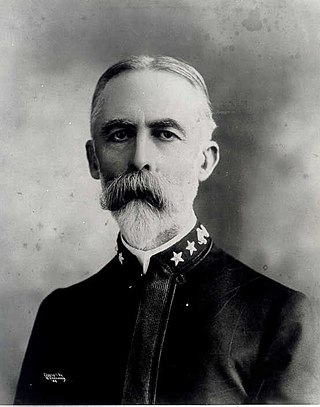
William Thomas Sampson was a United States Navy rear admiral known for his victory in the Battle of Santiago de Cuba during the Spanish–American War.

Rear Admiral Aaron Ward was an officer in the United States Navy during the late 19th and early 20th centuries. He served during the Spanish–American War.

USS Monongahela was a barkentine–rigged screw sloop-of-war that served in the Union Navy during the American Civil War. Her task was to participate in the Union blockade of the Confederate States of America. Post-war, she continued serving her country in various roles, such as that of a storeship and schoolship.

The first USS Trenton was a wooden-hulled screw steamer, classified as a screw frigate, in the United States Navy. She was named for Trenton, New Jersey.
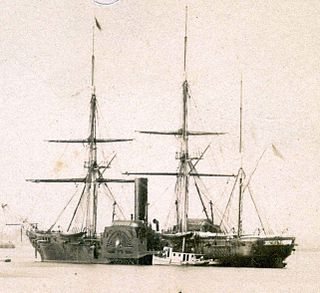
USS Susquehanna, a sidewheel steam frigate, was the first ship of the United States Navy to be named for the Susquehanna River, which rises in Lake Otsego in central New York and flows across Pennsylvania and the northeast corner of Maryland emptying into the Chesapeake Bay.
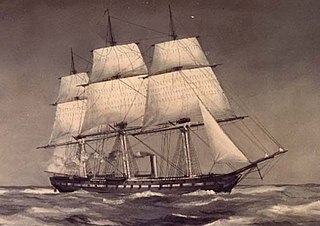
USS Wabash was a steam screw frigate of the United States Navy that served during the American Civil War. She was based on the same plans as Colorado. Post-war she continued to serve her country in European operations and eventually served as a barracks ship in Boston, Massachusetts, and was sold in 1912.
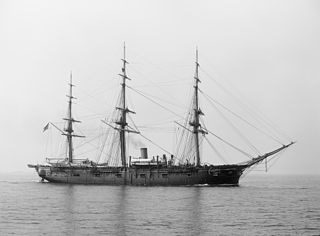
The first USS Lancaster was a screw sloop-of-war in the United States Navy during the American Civil War through the Spanish–American War.

USS Richmond was a wooden steam sloop in the United States Navy during the American Civil War.
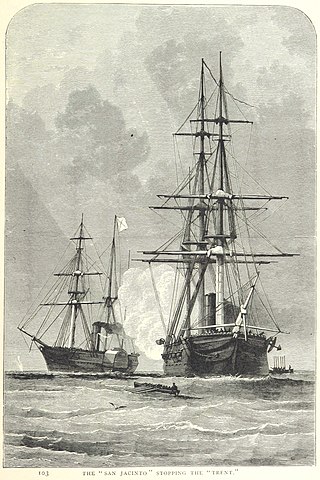
The first USS San Jacinto was an early screw frigate in the United States Navy during the mid-19th century. She was named for the San Jacinto River, site of the Battle of San Jacinto during the Texas Revolution. She is perhaps best known for her role in the Trent Affair of 1861.
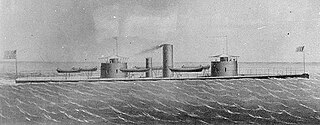
USS Monadnock was one of four Miantonomoh-class monitors built for the United States Navy during the American Civil War. Commissioned in late 1864, she participated in the First in December and Second Battles of Fort Fisher in January 1865. The ship was later assigned to the James River Flotilla on the approaches to the Confederate capitol of Richmond, Virginia and then sailed to Spanish Cuba to intercept the Confederate ironclad CSS Stonewall.

Edward Dunham Robie was a naval engineer, inventor, and Union naval officer during the American Civil War.
Commodore Jonathan Young was an officer in the United States Navy. He participated in anti-piracy actions and the African Slave Trade Patrol, fought in the Mexican War, Puget Sound War, and American Civil War, and served briefly as commander of the Asiatic Squadron.
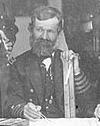
Rear Admiral George Henry Cooper was an officer in the United States Navy. During his long naval career, he served on the African Slave Trade Patrol, and fought in the Second Seminole War, the Mexican War, the American Civil War, and the Korean Expedition, and rose to command of the North Atlantic Squadron.
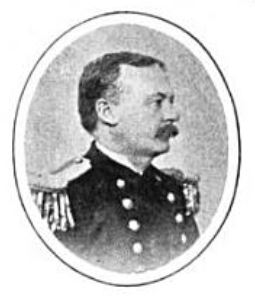
Francis John Higginson was an officer in the United States Navy during the American Civil War and Spanish–American War. He rose to the rank of rear admiral and was the last commander-in-chief of the North Atlantic Squadron and first commander-in-chief of the North Atlantic Fleet.

John Cummings Howell was an officer in the United States Navy during the American Civil War. He rose to the rank of rear admiral and late in his career was commander-in-chief of the North Atlantic Squadron and then of the European Squadron.

